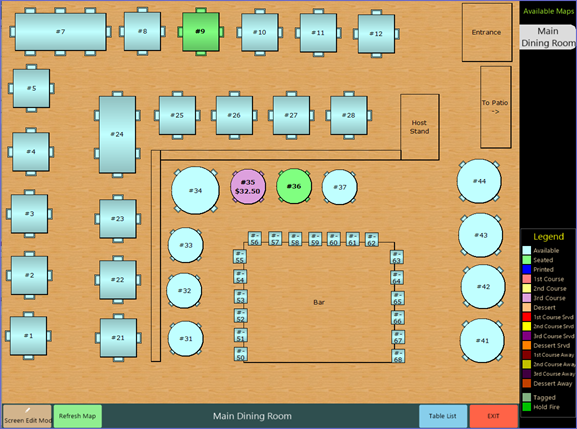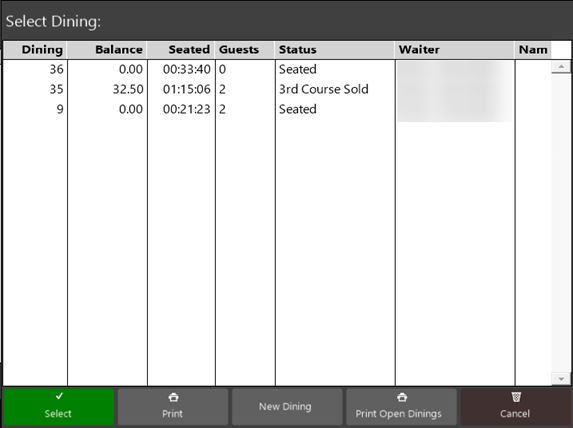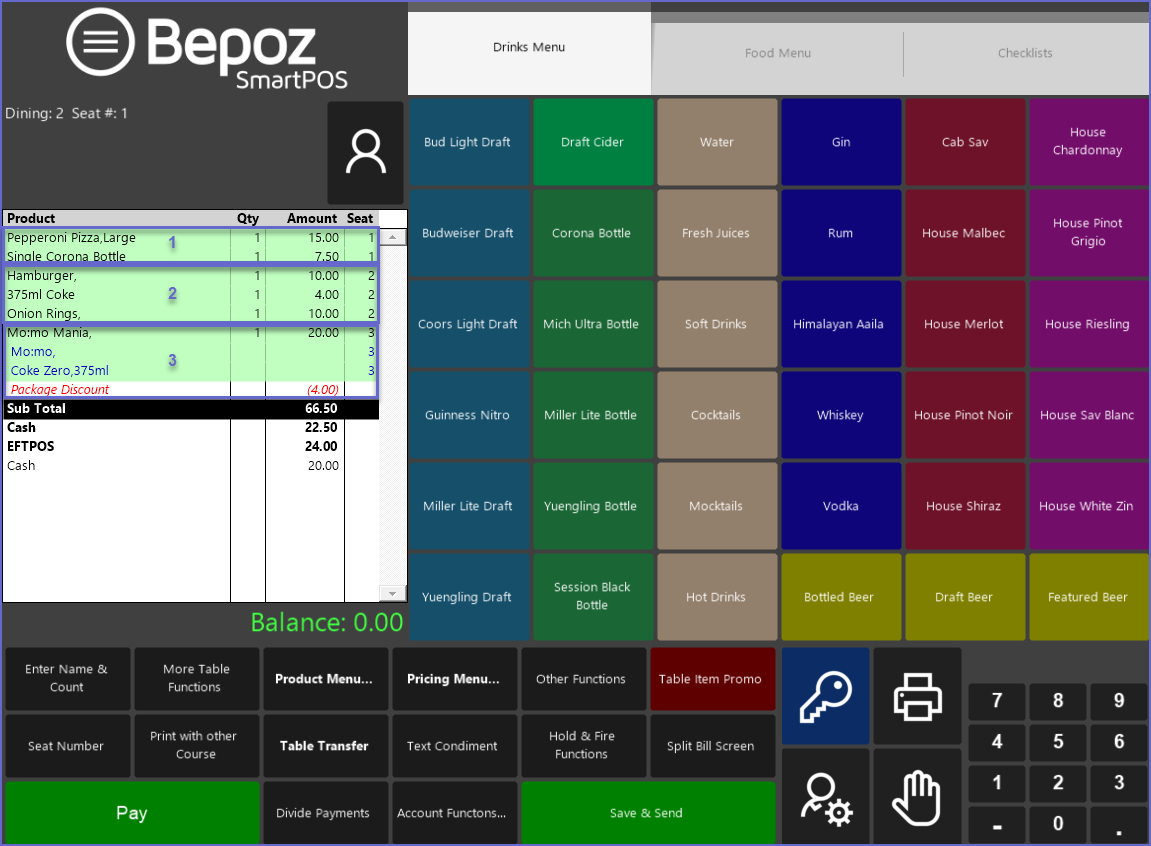- INTERNAL - Bepoz Help Guides
- End-User | Table Service and Kitchen Operations
- Tables & Table Service SmartPOS Workflows
-
End-User | Products & SmartPOS
-
End-User | Stock Control
-
End-User | Table Service and Kitchen Operations
-
End-User | Pricing, Marketing, Promotions & Accounts
- Prize Promotions
- Points, Points Profiles and Loyalty
- Product Promotions
- Repricing & Discounts in SmartPOS
- Vouchers
- Account Till Functions
- Pricing, Price Numbers and Price Modes
- Raffles & Draws
- Marketing Reports
- Accounts and Account Profiles
- Rewards
- SmartPOS Account Functions
- Troubleshooting
- Product Labels
- Packing Slips
-
End-User | System Setup & Admin
-
End-User | Reporting, Data Analysis & Security
-
End-User | Membership & Scheduled Billing
-
End-User | Operators, Operator Permissions & Clocking
-
Interfaces | Data Send Interfaces
-
Interfaces | EFTPOS & Payments
- NZ EFTPOS Interfaces
- Linkly (Formerly PC-EFTPOS)
- Adyen
- Tyro
- ANZ BladePay
- Stripe
- Windcave (Formerly Payment Express)
- Albert EFTPOS
- Westpac Presto (Formerly Assembly Payments)
- Unicard
- Manager Cards External Payment
- Pocket Voucher
- OneTab
- Clipp
- eConnect-eConduit
- Verifone
- AXEPT
- DPS
- Liven
- Singapore eWallet
- Mercury Payments TRANSENTRY
- Ingenico
- Quest
- Oolio - wPay
-
Interfaces | SMS & Messaging
-
Interfaces | Product, Pricing, Marketing & Promotions
- Metcash Loyalty
- Range Servant
- ILG Pricebook & Promotions
- Oolio Order Manager Integration
- Ubiquiti
- Product Level Blocking
- BidFood Integration
- LMG
- Metcash/IBA E-Commerce Marketplace
- McWilliams
- Thirsty Camel Hump Club
- LMG Loyalty (Zen Global)
- Doshii Integration
- Impact Data
- Marsello
- IBA Data Import
- Materials Control
- Last Yard
- Bepoz Standard Transaction Import
-
Interfaces | Printing & KDS
-
Interfaces | Reservation & Bookings
-
Interfaces | Database, Reporting, ERP & BI
-
Interfaces | CALink, Accounts & Gaming
- EBET Interface
- Clubs Online Interface
- Konami Interface
- WIN Gaming Interface
- Aristocrat Interface
- Bally Interface
- WorldSmart's SmartRetail Loyalty
- Flexinet & Flexinet SP Interfaces
- Aura Interface
- MiClub Interface
- Max Gaming Interface
- Utopia Gaming Interface
- Compass Interface
- IGT & IGT Casino Interface
- MGT Gaming Interface
- System Express
- Aristocrat nConnect Interface
- GCS Interface
- Maxetag Interface
- Dacom 5000E Interface
- InnTouch Interface
- Generic & Misc. CALink
-
Interfaces | Miscellaneous Interfaces/Integrations
-
Interfaces | Property & Room Management
-
Interfaces | Online Ordering & Delivery
-
Interfaces | Purchasing, Accounting & Supplier Comms
-
SmartPOS | Mobile App
-
SmartPDE | SmartPDE 32
-
SmartPDE | Denso PDE
-
SmartPDE | SmartPDE Mobile App
-
MyPlace
-
MyPlace | myPLACE Lite
-
MyPlace | Backpanel User Guides
- Bepoz Price Promotions
- What's on, Events and tickets
- Staff
- System Settings | Operational Settings
- Vouchers & Gift Certificates
- Member Onboarding
- Members and memberships
- System Settings | System Setup
- Reports and Reporting
- Actions
- Offers | Promotions
- Messaging & Notifications
- System Settings | App Config
- Surveys
- Games
- User Feedback
- Stamp Cards
-
MyPlace | Integrations
-
MyPlace | FAQ's & How-2's
-
MyPlace | Release Notes
-
YourOrder
-
YourOrders | Backpanel User Guides
-
YourOrders | YourOrder Kiosk User Guide
-
YourOrders | Merchant App User Guide
-
WebAddons
-
Installation / System Setup Guides
- SmartPOS Mobile App | Setup
- SmartPOS Mobile App | SmartAPI Host Setup
- SmartPOS Mobile App | BackOffice Setup
- SmartPOS Mobile App | Pay@Table setup
- SmartKDS Setup 4.7.2.7 +
- SmartKDS Setup 4.6.x
- SQL Installations
- Server / BackOffice Installation
- New Database Creation
- Multivenue Setup & Config.
- SmartPOS
- SmartPDE
- Player Elite Interface | Rest API
- Interface Setups
- Import
- KDSLink
- Snapshots
- Custom Interface Setups
-
HOW-2
- Product Maintenance
- Sales and Transaction Reporting
- SmartPOS General
- Printing and Printing Profiles
- SQL
- Repricing & Discounts
- Stock Control
- Membership
- Accounts and Account Profiles
- Miscellaneous
- Scheduled Jobs Setups
- Backoffice General
- Purchasing and Receiving
- Database.exe
- EFTPOS
- System Setup
- Custom Support Tools
-
Troubleshooting
-
Hardware
1 | Table Service, Tabs, and Bistro Introduction
This article covers introductory concepts to Table Service Tabs in Bepoz. Table Accounts are used for instances where a Transaction is left open for a period of time while Products can be added over the course of that time and then a Payment is Tendered and the transaction is Finalized.
This article covers introductory concepts to Table Service & Tabs in Bepoz.
Table Accounts are used for instances where a Transaction is left open for a period of time while Products can be added over the course of that time and then a Payment is Tendered and the transaction is Finalized.
Table Accounts can be of two types - Standard Table Account & Bistro Table Account. A Standard Table account is created in common dining scenarios where customers are seated and payments are usually processed at the end of the dining experience. Conversely, Bistro Table Account is a system where the customers from the same table make separate orders and payments and payments are typically processed immediately after ordering.
Within SmartPOS, there are a variety of methods for processing Transactions to these temporary Accounts such as Tables and Bar Tabs in different Food & Beverage Service environments which will be covered in this article.
Prerequisites
- To access SmartPOS Tables and Tabs features, the applicable Operator Privileges
-
Operator Maintenance 'Till Privileges' Tab - All "Tables" Flag
Tables & Tabs (Table Accounts) Explained
- Temporary Accounts within SmartPOS are created by Opening a Table
- The customers who are seated in the Table will be temporary "account holders" for the system until their Transaction/s have been processed and the Table is Closed
- This type of temporary account will either be a Standard Table Account or a Bistro Table Account as discussed in the article overview
Standard Table Account
- The Standard Table Account Function is used for Restaurants, Cafés, and Bar Tabs where the temporary account can be left running for a period of time and Products can be added over that period
- When using a Standard Table Account, an Operator can first Begin the table, Enter the products to be sold, and then Save the table
- The Table can then be Reopened to add more products and make adjustments to the Transaction
- When customers request a bill, the Operator can Print it for them, Tender a Payment, and Finalize the Transaction
- Standard Table Accounts also allows split billing so that customers can tender their payments separately
- The Tables can either be viewed on Table Map or Table List


- More information on this type of Table Account is covered in the
next article
Bistro Table Account
- The Bistro Table Account Function is used in a
Bistro environment where customers generally Tender Payment and Finalize the Transaction when ordering - This type of account allows Operators to open a 'table' and process multiple Transactions to the same Table order (a number is typically assigned which the guest will display prominently on the table; alternatively the guest may be given a pager which corresponds to the assigned Table number)
- However, only one kitchen printer docket prints consolidating all of the orders processed for the same Table number
- In this type of account, payments need to be done beforehand otherwise the system will not allow Closing the Transaction
- An example of a Bistro Table Account is shown below where three transactions are processed for the same Table

- Here even though three separate payments have been processed, the Table will combine all of them and a subtotal is displayed along with the individual payments
- Customers can also receive individual Transaction Receipts after each individual payment
Table Account Uses
- As mentioned above, Table Accounts can be used in any environment which requires a Transaction to be held Open for a period of time allowing customers to add Products during that time
- Such environments include Full-Service Restaurants, Cafés, Private Clubs, and Bars that allow running Tabs
- A Venue can have up to seven (8) different Table Groups and have separate Function buttons to allow access to Table Accounts for each
- The Function button to begin a Table Account can be renamed for clarity respective to its use, but the functionality would remain the same
